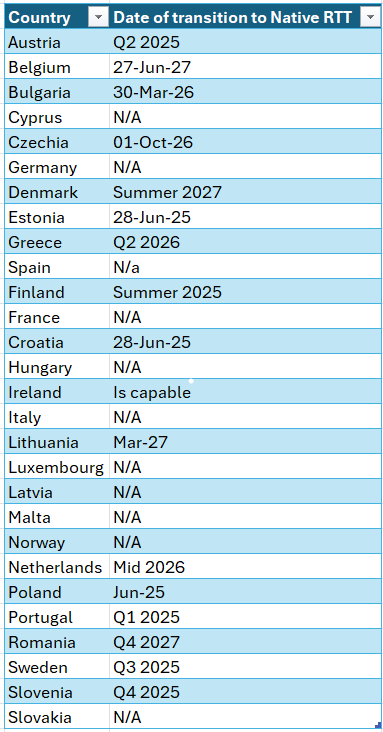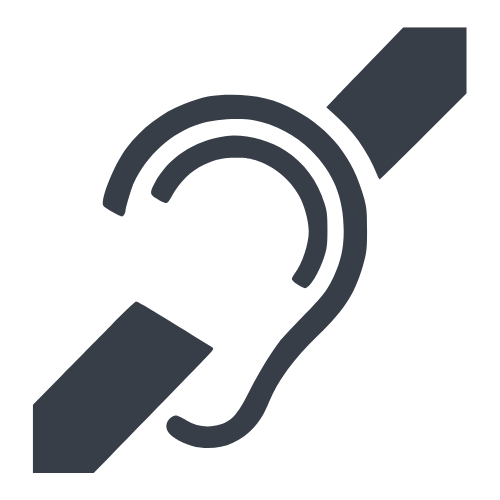Disability affects a high proportion of the population, but many countries still do not provide accessible emergency services. Limited communications options can leave persons with disabilities in particularly dangerous situations in times of emergency.
It is essential that countries ensure their emergency communications are accessible to all citizens.
Why are accessible communications important?
Disability affects 15-20% of every country’s population: there are at least 650 million persons with disabilities worldwide, and 100 million persons with disabilities in the European Union alone. 9% of Europe’s population is deaf or hard of hearing.
It is therefore both surprising and concerning that many emergency services can still only be reached via voice call.
What are the obstacles when implementing an accessible 112 service?
Even today, most emergency services are only capable of receiving voice communications, while only a marginal share of data and multimedia is used by European Public Safety Answering Points. Inherently, improving access to 112 for deaf and hard of hearing citizens requires enabling PSAPs to handle other modes of communications such as text and communications in a sign language and thus implementing access to 112 through text and video. It also involves adapting their operations policy (e.g. training call takers to use text messages in conversations) or employing sign language interpreters to handle video calls through a sign language. These systems can be costly to implement and require both the PSAP and the user to have fully functioning and compatible software.
What are the legal obligations for eu countries?
Two pieces of EU legislation directly relevant to accessible emergency communications are the European Electronic Communications Code (EECC) and the European Accessibility Act. The EECC is a directive that was adopted in December 2018 and serves as the main legal reference for emergency communications since December 2020. It is legally binding on all member states. The European Accessibility Act (EAA) includes some requirements on emergency access that complete the EECC and clarify the scope of ‘emergency communications’. Most of the provisions in this text must have been transposed in the Member States’ national law by 28 June 2022 and these national measures should start being applied not later 28 June 2025. Some of the measures that these legislations include are:
- (EECC) national authorities should take appropriate measures to ensure ‘whilst travelling in another Member State, end-users with disabilities can access emergency services on an equivalent basis with other end-users, where feasible without any pre-registration’ (article 109, paragraph 5, Directive 2018/1972/EC).
- (EECC) 112 awareness must also feature accessibility features (article 109, paragraph 7, Directive 2018/1972/EC).
- (EAA) at a minimum, real-time text (RTT) should be implemented (annex I, section IV, Directive2019/882/EC).
- (EAA) PSAPs should respond with the same communication method as that received (for example, text should be responded by text, video should be responded by video. (annex I, section V, Directive 2019/882/EC)
Additionally, these communications methods must be free of charge to the user (as 112 is mandated as being free to access).
The latest legislative change to emergency communications in the EU has recently been published through the delegated regulation of the European Electronic Communications Code (EECC).
On the topic of accessibility, the delegated regulation specifies the ‘functional equivalence requirements’ that need to be met for means of access to emergency services for people with disabilities. The criteria are: Two-way interactive communication; availability in a seamless way, without pre-registration, to people travelling to other member states; communication should be free of charge for the end-users; routing of the communication “without delay” to the most appropriate PSAP and appropriate handling of the communication by the PSAP; equivalent caller location accuracy and reliability compared to means of access for other end-users, and awareness campaigns to promote the existence of these means of access.
Implementation of RTT
Member States are obliged to implement Real Time Text and where appropriate, Total Conversation by 28 June 2027 at the latest.In 2025, Ireland became the first country in the EU to offer native RTT. Two Member States, (Malta and the Netherlands) currently have an app based RTT capability, while the majority of Member States intend to be capable of receiving RTT natively by 2027.On 18 December 2024, the European Commission published its report on the effectiveness of the implementation of the single European emergency number 112. This report outlined the following timelines for Member State implementation of Native RTT:

It is important to note that these roadmaps are indicative, and are subject to delays. For example, in Finland, which initially aimed to be capable of receiving native RTT by Summer 2025, has had to delay this until 2027. In addition, Germany has now indicated that all PSAPs will have RTT by 28 June 2027, with RTT potentially being possible in some PSAPs from 28 June 2025.
What kind of solutions are available?
There are several methods used across Europe to provide accessible emergency communications, all with their own pros and cons.
These include smartphone applications, text, relay services, textphone, total conversation, and more.
How can next generation 112 (NG112) Help imrpove Accessibility?
The NG112 architecture enables the modernisation of emergency communications, allowing for far more data collection (text, video, location or additional data). Naturally, offering text and video communications alongside traditional calls can help ensure equivalent access for people with disabilities. It is important that as NG112 is implemented, the needs of people with disabilities are a priority for new emergency communications frameworks.
Find out more about NG112 on our special focus page.
What does EENA Advocate for?
EENA believes that:
- Every EU country must implement a standard-based, reliable, effective solution which enables equal access to emergency services for persons with disabilities.
- The number to contact emergency services should be the same for everybody.
- The solution must perform consistently and precisely and must be usable with high confidence, based on 24h/365 days service provision.
- The solution should perform everywhere, including when the user is roaming. To ensure this, the implementation of NG112 is crucial.
- Emergency services must ensure that they establish appropriate procedures for the management of communication with users with disabilities, including adequate training of call-takers and dispatchers.
- The available solutions must be well communicated to the public also in an accessible manner, to ensure that persons with disabilities are aware of how they can contact emergency services. As the pros and cons in the document show, total conversation provides the best equivalent access to emergency services.
- Best practices should be shared so that countries and organisations can learn from each other.
Useful Resources
- EENA Document: Emergency Services Accessibility for Persons with Disabilities
- EENA Document: RTT and TC Implementation in Europe
- EENA Blog: NG112 with Accessibility in Mind
- EENA Blog: Where are we… with Accessibility?
- EENA 2023 Conference: Implementing Real-Time Text in the framework of the European Accessibility Act
- EENA 2021 Conference: How to Improve Accessibility for People with Disabilities?

